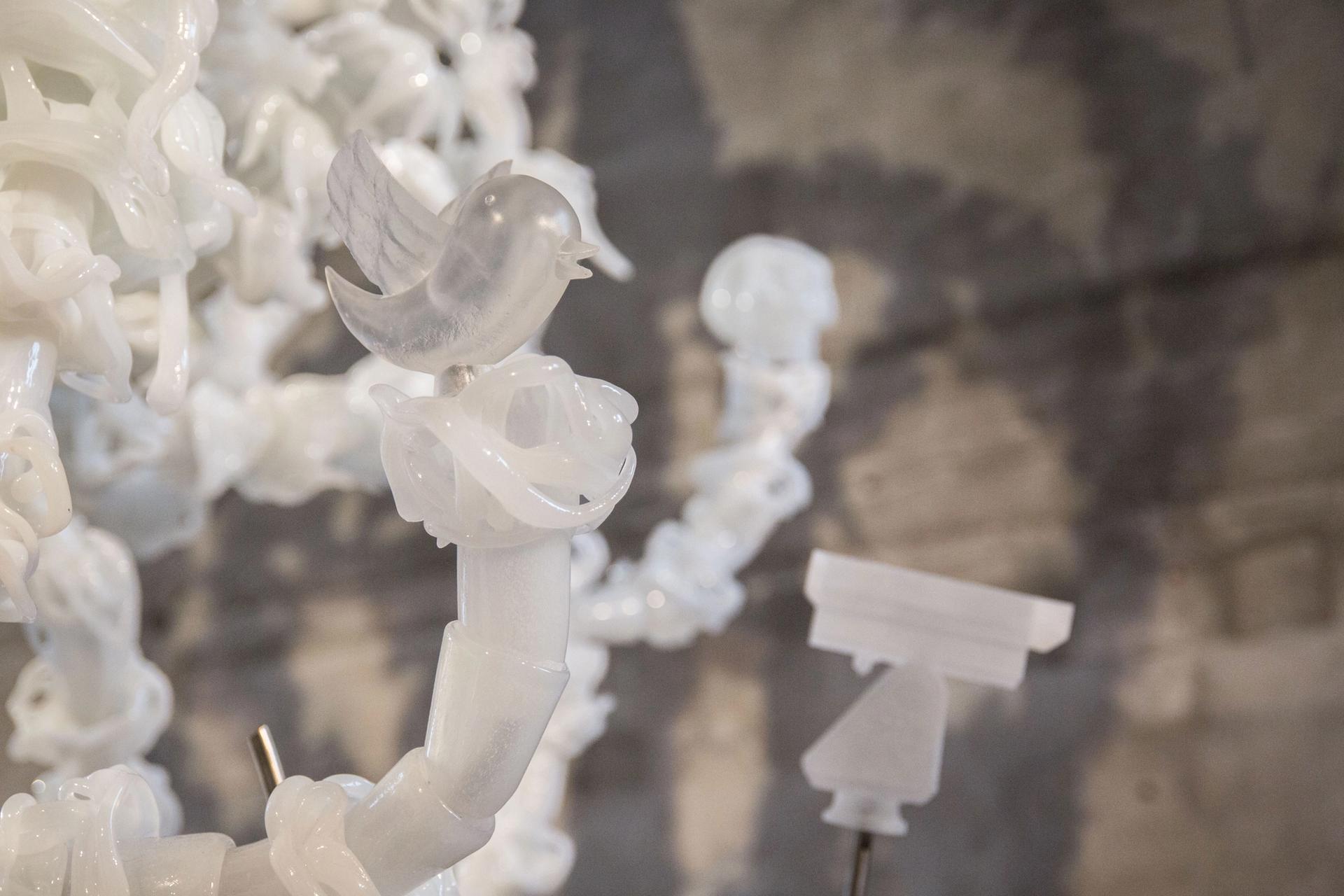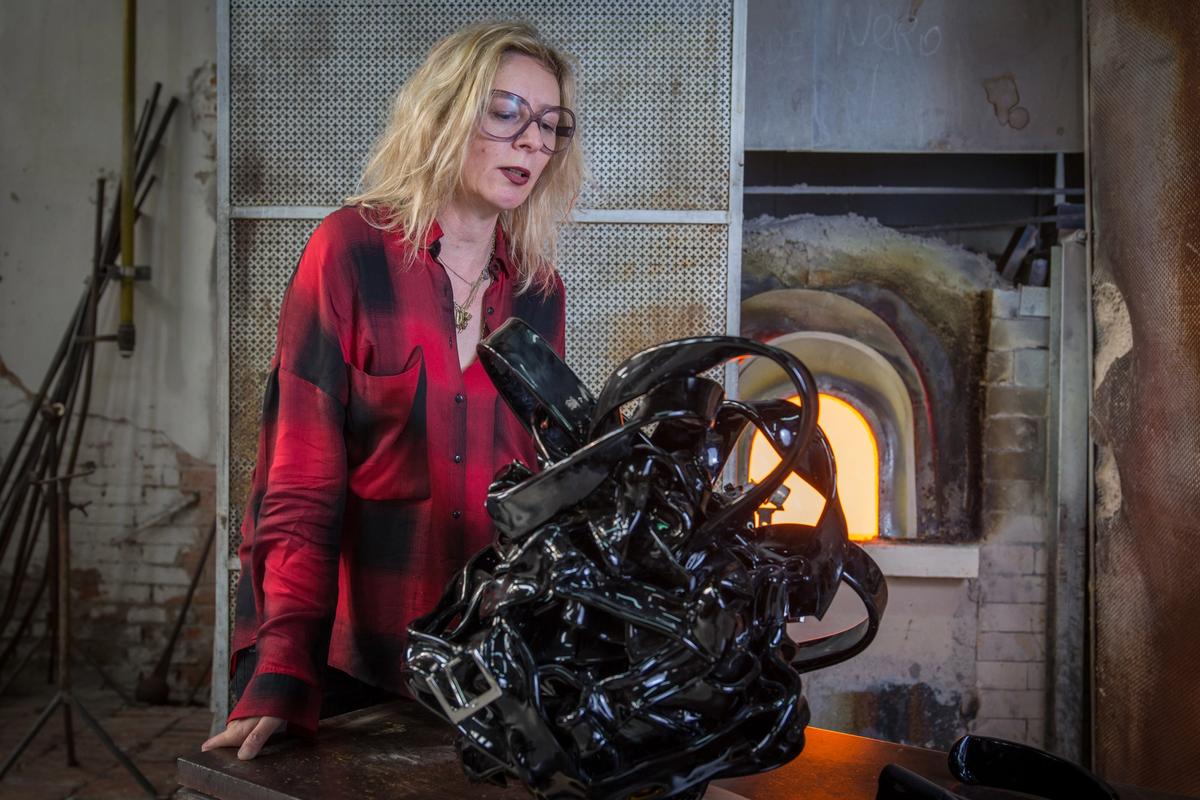To prepare for the Boca Raton Museum of Art’s upcoming exhibition Glasstress, Kathleen Goncharov, the museum’s senior curator only had a narrow window of opportunity over the past couple of years to visit the Berengo Studio in Venice, which has helped organise the exhibition. First the Italian lagoon suffered from record-breaking floods, swiftly followed by the onset of the coronavirus pandemic, but during an opportune moment in 2019 she made it to the island of Murano to choose handblown glass sculptures designed by 34 contemporary artists, including Ai Weiwei, Fred Wilson, Vik Muniz, Erwin Wurm, Fionna Banner, Prune Nourry, Ugo Rondinone, and Joyce J. Scott.
All of the sculptures shown in Florida were created over the past five years, and a few were even produced remotely in 2020, with artists coordinating with the studio via Zoom. Some are hand-sized and others fill rooms, and they are based on themes ranging from racial justice to climate change.

A detail of Ai Weiwei's Blossom Chandelier (2017)
Weiwei’s oversized Blossom Chandelier, for example, looks ornately floral from a distance, but on closer inspection is made up of Twitter birds fluttering near hands flipping the bird, as well as security cameras and skulls. Dike Blair reproduced a Windex bottle in glass, and Vik Muniz created Individuals, human-scale reproductions of lavish wine goblets. “Glass is so flexible, glass can become almost anything you want. It belongs already to the creative realm,” Muniz says in a short documentary prepared for the exhibition.
Other artists stretched how far the medium could be recognised, like Monica Bonvicini who created Bonded in which black glass looks like a sadomasochistic patent leather garment. And Jimmie Durham, who designed an installation of eight cougar heads called Strike Twice, chose to emphasize that unlike wood or metal, glass breaks. “It is interesting when it is broken, because the brokenness vibrates and is a little dangerous, always,” Durham says in the documentary. “When glass is broken, it’s prettier.”
One work, Glass Big Brother by conceptual artist Song Dong, was acquired for the museum’s permanent collection. It is a monumental chandelier with candlesticks pointing to the floor instead of the ceiling, and attached to surveillance cameras—a twist on an object that should illuminate our vision, but instead seems to be eerily watching us.

Monir al Qadiri Amorphous solid ghost (2017)
The exhibition is the museum’s second collaboration with the Berengo Studio’s Glasstress programme. “As it morphs from molten liquid to defined solid shapes, glass reinvents itself,” writes Adriano Berengo, the studio’s founder, in the exhibition catalogue. This fluid reinvention also applies to Berengo’s hope that contemporary artists adopt glass as a medium, and continue using it after leaving Venice.
“It was a challenging year to plan an international exhibition, but the effort serves as a tribute to the resilience of Venice,” says Irvin Lippman, the museum’s executive director. After these ambitious works were created, they were transported—very carefully—from Murano by boat and then Milan by truck, on a plane to Miami, and then through customs and on to Boca Raton. “A reassurance that art is an essential and enduring part of humanity.”


